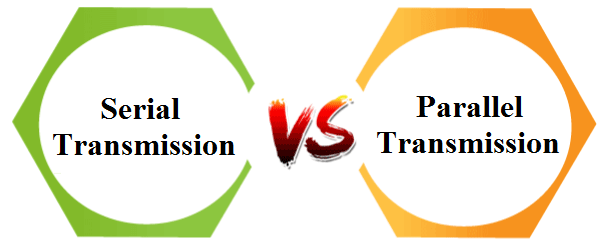Difference between Serial and Parallel TransmissionData transmission is the process of data delivery between two or multiple digital devices. The data is transmitted between digital systems using one of two methods: Serial or Parallel Transmission. They have some commonalities and some differences. The main distinction between these transmissions is that the data is transferred bit by bit in Serial Transmission. Still, in Parallel Transmission, the data is sent one byte (8 bits) or character at a time. The main similarity between these transmissions is that both transmissions are utilized to connect and interact with other devices. In addition, parallel transmission is time-sensitive, but serial transmission is not. In this article, you will learn about the difference between Serial and Parallel Transmission. But before discussing the differences, you must know about Serial and Parallel Transmission with their advantages and disadvantages. What is Serial Transmission?In Serial transmission, the data is delivered bit by bit from one computer system to another via bi-directional where each bit has its own clock pulse rate. In Serial Transmission, 8 bits are transferred at a time, with a start and stop bit (i.e., referred to as a Parity bit), which are 0 and 1. In this transmission, serial data cables are utilized to send data across extended distances. In this transmission, the data is delivered in proper order. It is made out of a 9-pin cable with a D-shaped that links data in series. Types of Serial TransmissionThere are mainly two types of serial transmission. These are as follows: 1. Asynchronous Serial Transmission Asynchronous transmission adds an extra bit to every byte to notify the recipient of the appearance of new data. Typically, the start bit is 0, and the stop bit is 1. 2. Synchronous Serial transmission There is no extra bit added in synchronous transmission; rather, data is conveyed in the form of frames that comprise numerous bytes. The serial transmission system cannot function without the installation of hardware at the transmitting and receiving ends. The hardware at the sending and receiving ends can transfer data from the device's parallel mode to serial mode. Advantages and Disadvantages of the Serial TransmissionThere are various advantages and disadvantages of Serial transmission. Some advantages and disadvantages of Serial transmission are as follows: Advantages
Disadvantages
What is Parallel Transmission?Parallel Transmission involves the simultaneous transfer of numerous bits from one computer system to another. It is quicker to send the bits and is utilized for short distances. It is also advantageous because it conforms to the underlying hardware, as electronic equipment such as computers and communication systems employ parallel circuits inside. The parallel interface works well in conjunction with the internal hardware. The installation and problem resolution are simple because it is placed in a single physical cable and utilizes a 25-pin port containing 17 signal lines and 8 ground lines. The 17 single lines are divided into 4 lines for initiating handshaking, 5 lines for communicating and notifying errors, and 8 for data transfer. Advantages and Disadvantages of the Parallel TransmissionThere are various advantages and disadvantages of Parallel transmission. Some advantages and disadvantages of Parallel transmission are as follows: Advantages
Disadvantages
Key Differences between Serial and Parallel Transmission
Here, you will learn about the key differences between Serial and Parallel Transmission. Some of the main differences between Serial and Parallel Transmission are as follows:
Head-to-head comparison between Serial and Parallel TransmissionHere, you will learn the head-to-head comparisons between Serial and Parallel Transmission. The main differences between Serial and Parallel Transmission are as follows:
ConclusionBoth serial and parallel transmission methods have benefits and downsides. Serial Transmission is more dependable for delivering data over greater distances. In contrast, Parallel transmission is mainly utilized for short distances and gives faster speeds. In summary, both transmissions are important for data transfer.
Next TopicDifference between
|
 For Videos Join Our Youtube Channel: Join Now
For Videos Join Our Youtube Channel: Join Now
Feedback
- Send your Feedback to [email protected]
Help Others, Please Share










